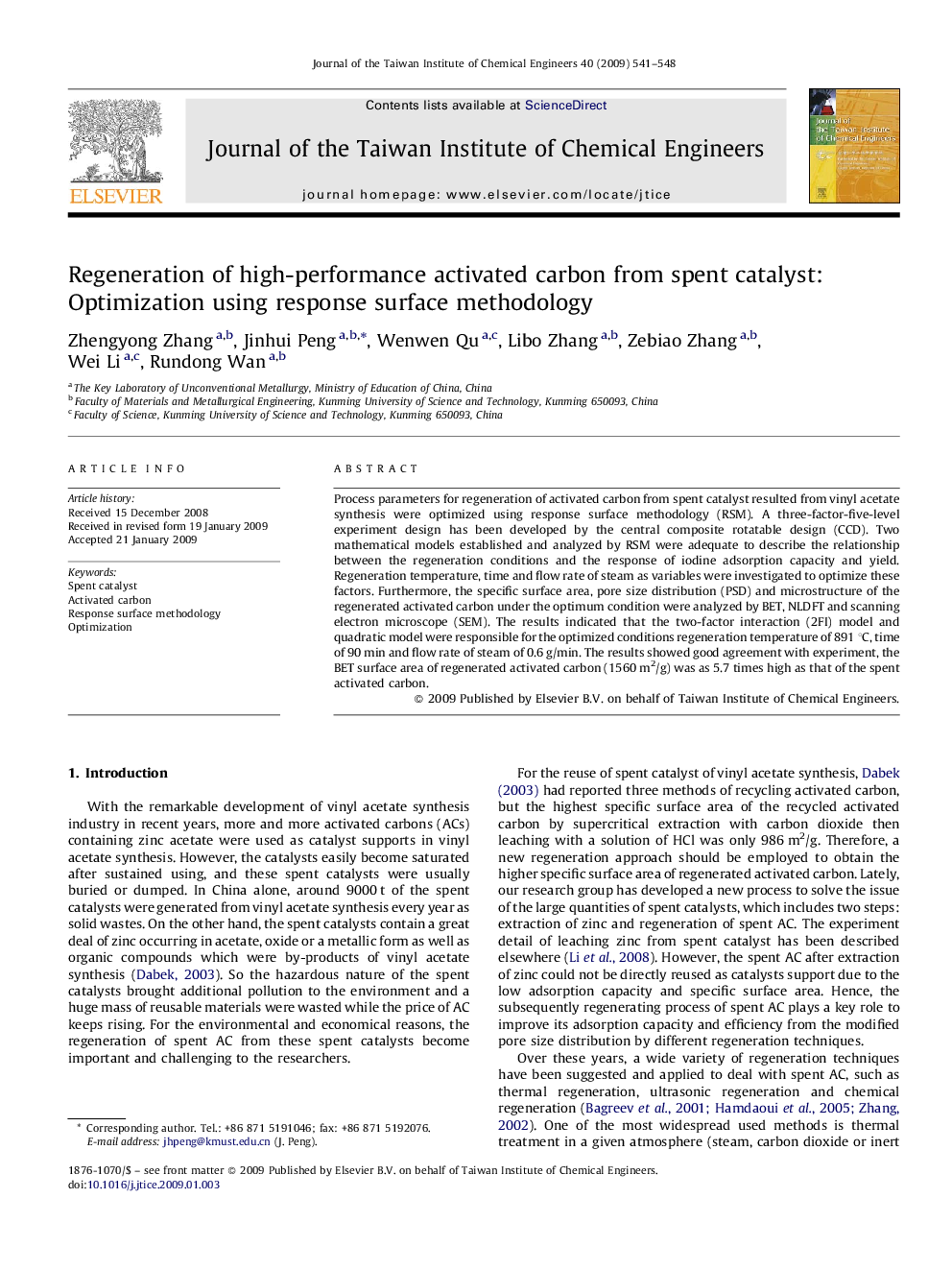| Article ID | Journal | Published Year | Pages | File Type |
|---|---|---|---|---|
| 691958 | Journal of the Taiwan Institute of Chemical Engineers | 2009 | 8 Pages |
Abstract
Process parameters for regeneration of activated carbon from spent catalyst resulted from vinyl acetate synthesis were optimized using response surface methodology (RSM). A three-factor-five-level experiment design has been developed by the central composite rotatable design (CCD). Two mathematical models established and analyzed by RSM were adequate to describe the relationship between the regeneration conditions and the response of iodine adsorption capacity and yield. Regeneration temperature, time and flow rate of steam as variables were investigated to optimize these factors. Furthermore, the specific surface area, pore size distribution (PSD) and microstructure of the regenerated activated carbon under the optimum condition were analyzed by BET, NLDFT and scanning electron microscope (SEM). The results indicated that the two-factor interaction (2FI) model and quadratic model were responsible for the optimized conditions regeneration temperature of 891 °C, time of 90 min and flow rate of steam of 0.6 g/min. The results showed good agreement with experiment, the BET surface area of regenerated activated carbon (1560 m2/g) was as 5.7 times high as that of the spent activated carbon.
Related Topics
Physical Sciences and Engineering
Chemical Engineering
Process Chemistry and Technology
Authors
Zhengyong Zhang, Jinhui Peng, Wenwen Qu, Libo Zhang, Zebiao Zhang, Wei Li, Rundong Wan,
